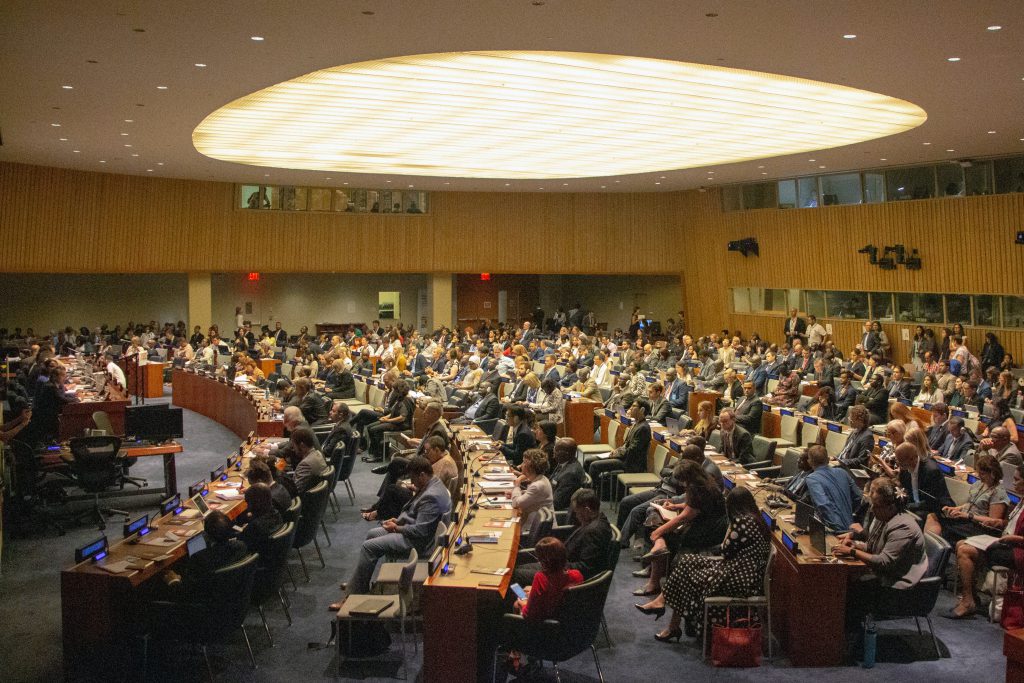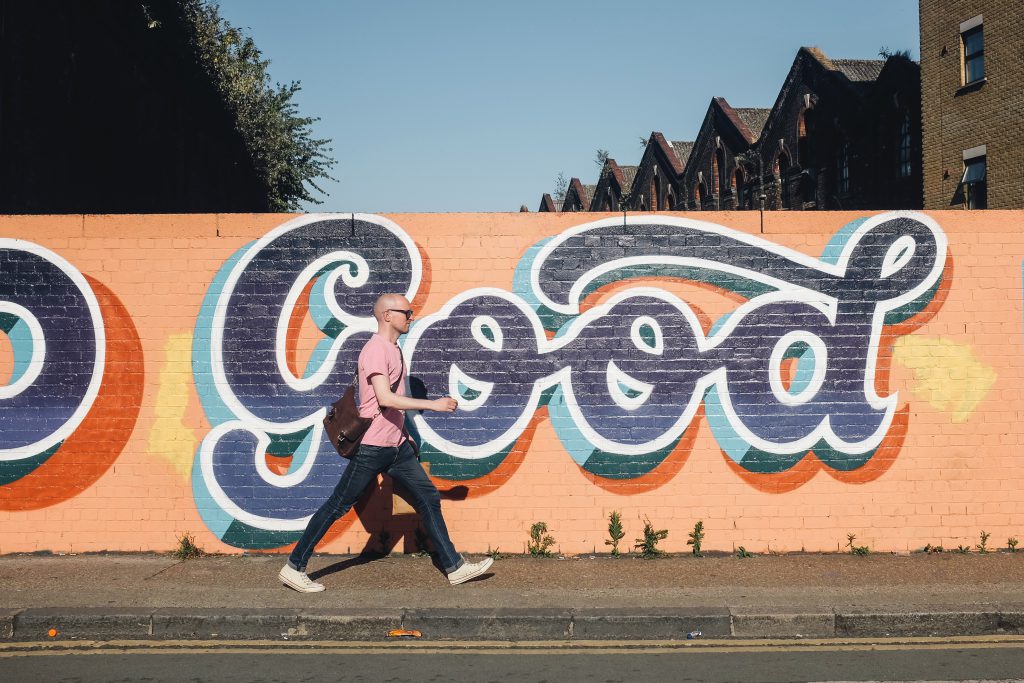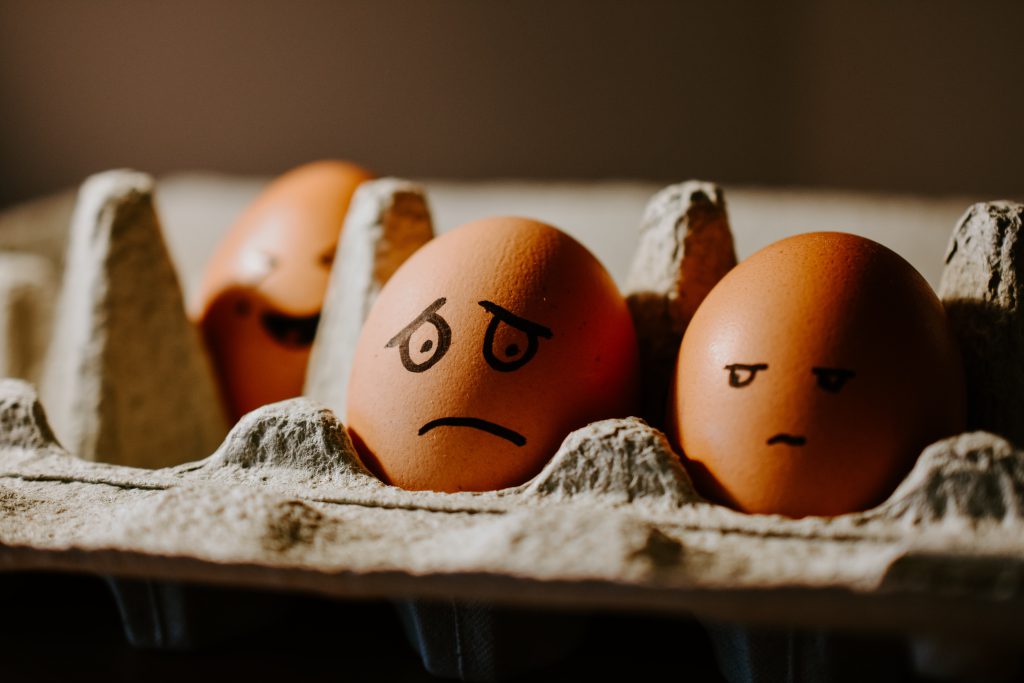Our blog focused on the 2030 Agenda for Sustainable Development and its Sustainable Development Goals (SDGs). Amidst the analysis and reports that revealed that the 2030 Agenda implementation is lagging, and that the SDG targets set would not be met on time (see, for example, Walling, 2023), we wanted to discuss the SDGs and show (and contest) how information and communication technologies (ICT) are utilised in the United Nations (UN) SDG campaign, as well as in advancing socio-economic development in middle- and low-income countries (LMICs).

Source: Photo by Matthew TenBruggencate on Unsplash
In this final blog post, I focus on how advances in ICT and new media have positively and negatively impacted communicating the SDGs. Through examples, I point out what I think are hits (the “good”) and misses (the “bad” and the “ugly”) in communicating development. After that, I conclude with my reflections on the topic and the blogging experience.
The Good
Outright, credit must be given to the UN (and its partners) for making it easy to communicate the SDGs (especially when compared to its predecessor, the Millennium Development Goals). Alongside the launch of the 2030 Agenda and the SDGs in 2015, a communications mindset was applied to simplifying (and translating) the language of the UN to appeal to a broader audience and developing logos and icons with colour schemes, which would not only work on print media but also digital media (alongside advances in ICT and new media). This made it easier to understand what the goals meant and how relevant they were to citizens. The communication materials were also eye-catching and attractive and have even become trendy. These are all buttressed by guidelines on how the icons, logos and communication materials could be used by the UN, as well as other actors and stakeholders.

Importantly, the communications around the SDGs were inclusive, and it was not promoted as UN-owned goals but owned and shared by all. Everyone had a role in realising them with many good practices (See, for example, OECD Development Communication Network, 2017 and Mulholland, 2019). Moreover, the UN leadership was committed to communications. For example, at a packed conference on “Communicating the Sustainable Development Goals – for Everyone” held in the UN Headquarters in New York in April 2016, the UN President of the 70th General Assembly President, Mogens Lykketoft, stressed that “One thing is certain; we will only deliver on the SDGs if people know about the goals, demand action, and hold their leaders to their promises.”
Alongside this development was also an important institutional shift in the UN in 2019. The former Department of Public Information was renamed the Department of Global Communications. According to the UN press release, this new Department aims at outreach for impact as it instils a culture of collaboration and innovation, undertaking measures to create broader public engagement needed to tackle global challenges. Notably, the example of how the work has shifted is “… climate communications where an artificial intelligence bot – developed and launched by the Department and external partners – has enabled individuals around the world to log and share more than 110,000 climate actions undertaken.”
So, while the debate continues as to whether (and if so, how) ICT fosters development and Sein et al. (2019) have carved a path for ICT4D research to tackle this, the UN Department of Global Communications and other communication practitioners like me have experienced first-hand how ICT and new media have advanced SDG communications. Firstly, it has helped expand the ways and even opened new avenues by which one can communicate about or for development. For those actors and organisations that have caught on (and only some have!), this meant reaching new audiences. It is now possible, for example, to communicate to a younger demographic that is normally perceived as difficult to reach (as they do not read or visit webpages) but can now be connected to via TikTok.
Moreover, one can now be more proactive when engaging audiences. This could be realised, for example, through a chat functionality on websites to be manned by staff during office hours and by an Artificial Intelligence (AI) chatbot outside of office hours. Additionally, utilising ICT has made communication processes more cost-effective through, among others, automation. For example, it is possible to programme in advance communication outputs, like tweets on X (formerly Twitter) or Facebook posts. Thus, there is no need to work overtime to get things done.
In my view, a relevant development and example of a hit is the proliferation of websites that function as information hubs, which have become go-to sites that help explain and facilitate the realisation of the SDGs. In my first individual post entitled, SDG 16: What is it about and why it matters to you and me?, I did lament the challenges of implementing and communicating SDG 16, which aims to “promote just, peaceful and inclusive societies”. However, I also shared my top three go-to portals. These include:
- The Just and Inclusive Institutions programme of the UNDP Oslo Governance Center produces research, data and insights to ensure informed policy responses that uphold human rights and deliver more just and inclusive governance services. The Center also runs the SDG 16 Hub, a one-stop portal (with a newsletter) intended for anyone interested in getting knowledge and information on SDG 16.
- The International Development Law Organisation (IDLO) explains how the rule of law helps fulfil SDG 16 and shows through stories how this is put into practice in fragile and post-conflict. Notably, IDLO co-organises together with the UN Department of Economic and Social Affairs, the annual SDG 16 Conference, which brings together all relevant actors – government and non-governmental – to review SDG 16 implementation to learn and make strides towards its realisation.
- The International Institute for Democracy and Electoral Assistance (International IDEA) features databases, tools and knowledge products that rights holders and institutions could use to help them achieve SDG 16. Through stories and good examples, albeit biased towards democracy, they help one understand how peaceful and inclusive societies can lead to better lives for all citizens and advance sustainable development.
Yes, SDG 16 remains a packed and challenging goal today (especially if we look at the conflicts that have arisen in the last year). Still, it becomes easier to understand when taken apart and explained via these information hubs. The concepts and sub-goals become more relatable to the average citizen or the individual rights holder.
The Bad
ICT and new media are NOT useful and become a deterrent when they cannot be accessed. As Unwin (2017) writes, there is recognition that ICTs led to increasing inequality between those with access to the latest technologies and those who only have access to older ICTs or none at all. Thus, they become a hindrance to information and engagement for those target audiences who are subject to the digital divide. According to the Internet Society, there are multiple divides, not simply the “gap between those who have and do not have access to the Internet” but multi-faceted (Muller and de Vasconcelos Aguiar, 2022). The gaps intersect and include availability, affordability, interest, and digital literacy.

If one were to put the gap into numbers (and there are many ways of calculating the digital divide), we can take the estimate put forward by the Broadband Commission for Sustainable Development in their State of Broadband Report for 2023, highlighting that about 2.6 billion people are offline. This is an improvement as it is a reduction from 2.7 billion people in 2022, which still signifies that about one-third of the world is unconnected.
This is to say that despite efforts by communication departments to build a good website (that works with a variety of devices) or contract influencers to promote a message about a particular sustainable development goal (SDG), it is a given that one-third will never have the chance to see those. It is important to note that this is just access via the Internet. We are not talking about other forms of technology and the issues that prevent them from being accessible, such as mobile networks, power shortages, etc.
To illustrate how ICT and new media can be exclusionary, I refer to my interactive blog post on the International Day of the Girl Child, entitled Investing in the Girl Child: Digital Communications and the SDG 5-SDG16 Nexus. In that post, I highlight that UNICEF and Plan International are leading the organisation of an online event entitled Invest in Girls’ Rights: Our Leadership and Well-Being on 11 October 2023 from 930-1130 (EDT, New York Time). The event is interesting because it will showcase girls who actively influence government policies, business practices, and research priorities. In their communications campaign, they are not only enjoining audiences to talk about the event or share it on social media but also encouraging interested audiences to join via a Zoom link and organise viewing parties, with clear guidelines on how this should be done. I tried to register for this event but discovered that it was already closed, perhaps an indication of how successful the outreach was, as they have now maxed out the bandwidth allowed for interested audiences to join.
In this example, it is great that ICT and new media are being used innovatively to entice more engagement and appeal to audiences. Viewing parties have recently become popular, and it is great that that is being incorporated into this campaign. However, this whole venture left out those on the other side of the digital divide, which presumably also has the girls that need the most support. Notably, no information was available on what could be had offline. Were there face-to-face meetings to discuss these issues in communities without access to ICT and new media? Can print media or other communication materials be provided to these girls and their communities to make them part of this call and, if anything, assure them that we hear them and are on their side? I have not been able to find any information.
The Ugly
While I deem not being able to access ICT and new media as “bad”, I would consider their misuse, misrepresentation, and the idea that just because they exist, things would be better for development as “ugly”. Let me start with misuse, which is maliciously using ICT and new media to spread false information. With disinformation, there is a deliberate attempt to deceive and spread information to harm. The threat is such that the UN General Assembly has expressed concern over its proliferation and has lauded the UN Secretary-General report on Countering disinformation for promoting and protecting. In this report, the recommendations to counter disinformation include digital and media literacy programmes, tools, and mechanisms supporting independent fact-checking. Importantly, it calls on governments NOT to impose restrictions but to promote and protect free and independent media to maximise transparency and access to information to build trust in public institutions and governance.

As audiences, it is important to be well aware of ill-intentioned content developers who use ICT, such as trolls, to manipulate information and sway public information. In this case, rather than acting as the catalyst for information, ICT and new media work to disrupt the peace that should be protected or preserved. A poignant example of how trolls have impacted a country and its elections can be seen in my country, the Philippines (see Paulo, 2022).
About misrepresentation, I refer to the proliferation of “communication for social changemaking”, as highlighted by Norske-Turner (2023). In her article, she calls for the need to be cautious and even critically interrupt the assimilation of global capitalist values in communication for development as they can undermine social justice goals and even defeat how communications can help “decolonise” development.
Under this, we see several examples of firms adopting (or calling for firms to adopt) SDG branding with the rise of sustainability reports (see, for example, The SDGs: Opportunities to Align Your Strategy and Communication, n.d.). Consumers have become conscious of the environment and human rights, and they want to purchase sustainable goods and services from firms. While the Global Reporting Initiative helps provide the standard by which firms and other organisations take responsibility in reporting their impact, we know that this is prone to abuse. Try downloading a sustainability report of a firm and check the narrative of how exactly they respond to the SDGs; you would feel that there is some form of conceptual stretching, whitewashing and misrepresentation.
My final illustration of what is “ugly” is informed by a quote from Murphy & Carmody (2015): “ICT tools can help people learn how to absorb knowledge generated elsewhere and combine it with local needs and local knowledge, and they can help raise real economic returns to investments; but they are being touted in the development community as though they can leapfrog over the more familiar development problem. This is like saying that cheap books can cure illiteracy.” (Murphy & Carmody, 2015, p. 16). This, to me, really hits the nail’s head. The current challenges we have with development, such as (neo)colonialism, white saviourism and Global North dominance (or lack of dialogue and understanding of the Global South perspective), will not be addressed just because we found an effective and efficient way of communicating about development or communication for development via advances in ICT and new media. These issues are still there unless we consciously work towards addressing them.
Under this, I would add insights by guest lecturers like Reem Talhouk, who pointed out that for tech to be truly decolonial, it should be free of capitalist strappings and be open source. It is not enough to say that you can download it for free from your website and still have a hook to its copyright. Another insight is by Jörg Arnold, co-founder of FairPicture.org, who highlighted that while everyone agrees that pictures are important, there is just no budget. And because of that, organisations fail to select and utilise images that are representative of the Global South (not degrading, decolonial or reeking of white saviourism). Thankfully, there are organisations like FairPicture.org that counter this practice through their worldwide network of photographers and online tools.
Reflections
When we agreed to focus our blog on communicating the SDGs and how ICT and new media facilitate that, the assignment would be quite a walk in the park. As a former international civil servant, I am quite familiar with the UN communication materials and their accompanying guidelines, so this was churning out blog posts on issues I was already familiar with.

The course literature, the lectures, and the drive to not just feature but also question communicating about and for development using advances in ICT and new media, however, made me reflect and question my ways of communicating my work in development. For example, I was not at all sensitive to the digital divide, the images I used on social media or the language I employed. After all, when working with tight deadlines and limited resources, ensuring the task is done with any passable output is more important.
While I cannot say that this whole experience has changed me as a development worker, I know these bad habits could persist, especially in work environments where they are not addressed; I certainly feel more conscious of my actions. I can do my part to help “people from less advantaged backgrounds be enabled to enhance their capabilities and increase their participation in matters which affect their lives.” (Walsham, 2017, p. 37). I know I can now act from a place with better knowledge of the interplay of new media, ICT and development.
References
Broadband Commission for Sustainable Development Press Release (2023, September 16). Broadband Commission urges collaborative action to accelerate connectivity and progress on Sustainable Development Goals. Retrieved from https://www.broadbandcommission.org/annual-fall-meeting-2023-press-release/
Communicating the Sustainable Development Goals – For Everyone (n.d.). Retrieved from https://worldsbestnews.org/partners-projects/communicating-the-sustainable-development-goals-everyone/
Global Reporting Initiative. Retrieved from https://www.globalreporting.org/
Muller, C & de Vasconcelos Aguiar, J.P. (2022). What is the Digital Divide? Internet Society Blog. Retrieved from https://www.internetsociety.org/blog/2022/03/what-is-the-digital-divide/
Mulholland, Eric (2019). Communicating Sustainable Development and SDGs in Europe: Good practice examples from policy, academia, NGOs and media. ESDN Quarterly Report 51, January 2019. ESDN Office, Vienna. Retrieved from https://www.esdn.eu/fileadmin/ESDN_Reports/ESDN_Quarterly_Report_51_Final.pdf
Murphy, J.T. & Carmody, P. (2015). Africa’s Information Revolution-Technical Regimes and Production Networks in South Africa and Tanzania. Chichester: Wiley-Blackwell.
Noske-Turner, J. (2023). Communication for Social Changemaking: A “New Spirit” in Media and Communication for Development and Social Change? International Journal of Communication, 17(2023), 2944-2966. https://ijoc.org/index.php/ijoc/article/view/18759/4151
OECD Development Communication Network (2017). 10 Learning Areas for SDG Communications. Discussion Note for the OECD DevCom Peer Learning Hub. Presented at Global Festival for Ideas on Sustainable Development, Bonn 1-3 March 2017. Retrieved from https://www.oecd.org/dev/pgd/DevCom_10_Learning_Areas_SDG_Communications.pdf
Paulo, D. A. (2022, September 4). Trolls for hire in Philippines: The concealed political weapon used in social media war. Channel News Asia. Retrieved from https://www.channelnewsasia.com/cna-insider/paid-troll-army-hire-philippines-social-media-elections-influencers-2917556
Sein, M.K., Thapa, D, Hatakka, M. & Sæbø, Ø. 2019: A holistic perspective on the theoretical foundations for ICT4D. Information Technology for Development, 25(1), 7-25.
The SDGs: Opportunities to Align Your Strategy and Communication (n.d.). Retrieved from https://blog.worldfavor.com/the-sustainable-development-goals-opportunities-of-aligning-your-strategy-and-communication
Unwin, T. (2017). Reclaiming Information & Communication Technologies for Development. Oxford: Oxford University Press.
United Nations. Sustainable Development. Retrieved from https://sdgs.un.org/
United Nations. United Nations Millennium Development Goals. Retrieved from https://www.un.org/millenniumgoals/
United Nations General Assembly (2021). Countering disinformation for the promotion and
protection of human rights and fundamental freedoms. Report of the Secretary-General. Retrieved from https://documents-dds-ny.un.org/doc/UNDOC/GEN/N22/459/24/PDF/N2245924.pdf?OpenElement
United Nations General Assembly (2021). Resolution Adopted by the General Assembly on 24 December 2021 – Countering disinformation for the promotion and protection of human rights and fundamental freedoms. Retrieved from https://documents-dds-ny.un.org/doc/UNDOC/GEN/N21/416/87/PDF/N2141687.pdf?OpenElement
United Nations Press Release (2019, April 29). Reforms by Newly Named Department of Global Communication Aim at Outreach ‘for Impact’, Under-Secretary-General Tells Committee on Information. Retrieved from https://press.un.org/en/2019/pi2256.doc.htm
Walsham, G. (2017). ICT4D research: reflections on history and future agenda. Information Technology for Development, 23(1), 18-41. https://doi.org/10.1080/02681102.2016.1246406
Walling, M. (2023, June 21). World well short of pace needed to meet UN’s 2030 sustainable development goals. Associated Press. Retrieved from https://apnews.com/article/un-sustainable-development-goals-progress-shortfalls-financing-0d21dc33fd65fb18c248c239db89db37

